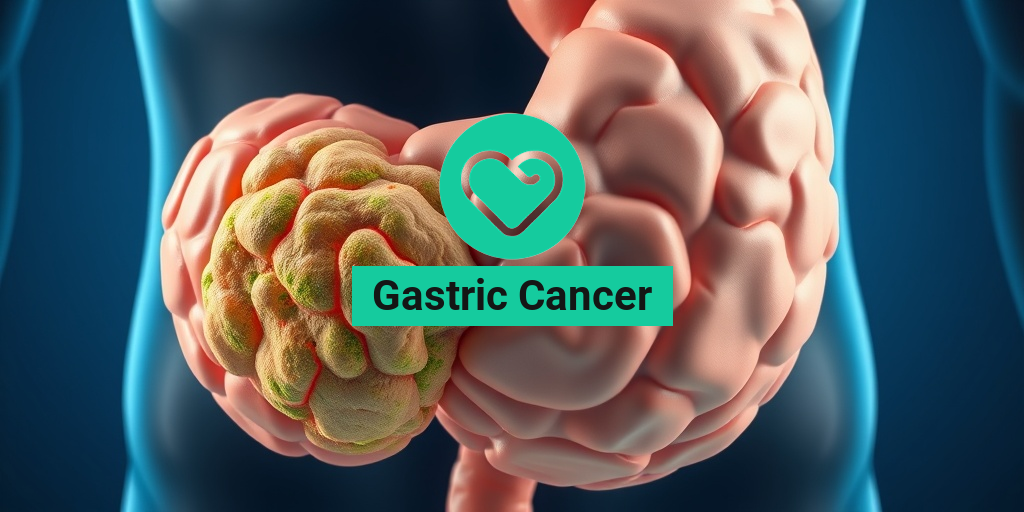What Is Chronic Lymphocytic Leukemia?
Chronic Lymphocytic Leukemia (CLL) is a type of cancer that affects the blood and bone marrow. It primarily involves the overproduction of a specific type of white blood cell known as lymphocytes. These cells play a crucial role in the immune system, helping the body fight infections. However, in CLL, the body produces too many abnormal lymphocytes that do not function properly, leading to various health complications.
Understanding the Disease
CLL is classified as a slow-growing leukemia, which means that it often progresses slowly and may not present symptoms for years. This characteristic can make it challenging to diagnose early. The disease is most commonly diagnosed in older adults, with the average age of diagnosis being around 70 years. However, it can occur in younger individuals as well.
Causes and Risk Factors
While the exact cause of CLL remains unclear, several risk factors have been identified:
- Age: The risk increases with age, particularly in those over 60.
- Family History: A family history of CLL or other blood cancers can elevate risk.
- Gender: Men are more likely to develop CLL than women.
- Exposure to Chemicals: Certain chemicals, such as those used in farming, may increase risk.
Understanding these factors can help individuals assess their risk and seek appropriate medical advice if necessary.
CLL Symptoms
Recognizing the symptoms of Chronic Lymphocytic Leukemia is crucial for early diagnosis and treatment. While some individuals may not experience symptoms initially, others may notice various signs as the disease progresses.
Common Symptoms of CLL
Here are some of the most common symptoms associated with CLL:
- Fatigue: A persistent feeling of tiredness that does not improve with rest.
- Swollen Lymph Nodes: Painless swelling in the lymph nodes, particularly in the neck, armpits, or groin.
- Frequent Infections: Increased susceptibility to infections due to compromised immune function.
- Unexplained Weight Loss: Losing weight without trying can be a concerning sign.
- Night Sweats: Excessive sweating during the night, often soaking through clothing.
- Easy Bruising or Bleeding: Increased tendency to bruise easily or experience prolonged bleeding from minor cuts.
When to Seek Medical Attention
If you experience any of these symptoms, especially if they persist or worsen, it is essential to consult a healthcare professional. Early detection can significantly impact treatment outcomes and overall prognosis.
Conclusion
Chronic Lymphocytic Leukemia is a complex disease that requires careful monitoring and management. Understanding its symptoms and risk factors can empower individuals to seek timely medical advice. For more information on CLL and other health-related topics, consider visiting Yesil Health AI, a valuable resource for evidence-based health answers.
By staying informed and proactive about your health, you can navigate the challenges of CLL more effectively. Remember, knowledge is power! 💪

CLL Risk Factors
Chronic Lymphocytic Leukemia (CLL) is a type of cancer that affects the blood and bone marrow, leading to an overproduction of abnormal lymphocytes. Understanding the risk factors associated with CLL can help in early detection and management. Here are some key risk factors to consider:
Age
One of the most significant risk factors for developing CLL is age. The majority of CLL cases occur in individuals over the age of 60. As we age, our immune system becomes less efficient, making it easier for cancers like CLL to develop.
Gender
Research indicates that men are more likely to develop CLL than women. The reasons for this disparity are not entirely understood, but hormonal differences may play a role.
Family History
If you have a family history of CLL or other blood cancers, your risk of developing this condition may be higher. Genetic factors can contribute to the likelihood of developing CLL, so it’s essential to discuss your family medical history with your healthcare provider.
Ethnicity
Studies have shown that CLL is more prevalent in certain ethnic groups. For instance, Caucasians are at a higher risk compared to African Americans and Asians. Understanding these demographic factors can aid in identifying individuals who may need closer monitoring.
Exposure to Chemicals
Exposure to certain chemicals, such as pesticides and herbicides, has been linked to an increased risk of CLL. Occupational exposure in agricultural settings may elevate this risk, making it crucial for individuals in these professions to take preventive measures.
Immune System Disorders
Individuals with weakened immune systems, whether due to autoimmune diseases or previous treatments for other cancers, may have a higher risk of developing CLL. Conditions like HIV/AIDS can also compromise the immune system, increasing susceptibility to various cancers.
Previous Cancer Treatments
Patients who have undergone chemotherapy or radiation therapy for other cancers may have an increased risk of developing CLL later in life. This is particularly true for treatments that target the blood and bone marrow.
CLL Diagnosis
Diagnosing Chronic Lymphocytic Leukemia involves a combination of physical examinations, laboratory tests, and imaging studies. Early diagnosis is crucial for effective management and treatment. Here’s how healthcare professionals typically diagnose CLL:
Physical Examination
During the initial consultation, your doctor will perform a thorough physical examination. They will check for signs of CLL, such as swollen lymph nodes, an enlarged spleen, or liver. These physical signs can provide valuable clues about your health status.
Blood Tests
Blood tests are essential for diagnosing CLL. A complete blood count (CBC) will help determine the levels of different blood cells, including lymphocytes. In CLL, there is often a significant increase in the number of lymphocytes. Additional tests may include:
- Flow Cytometry: This test analyzes the characteristics of the lymphocytes to confirm whether they are cancerous.
- Genetic Testing: Identifying specific genetic mutations can help determine the prognosis and guide treatment options.
Bone Marrow Biopsy
A bone marrow biopsy may be performed to assess the extent of the disease. During this procedure, a small sample of bone marrow is extracted, usually from the hip bone, and examined for the presence of abnormal lymphocytes. This test provides critical information about how advanced the CLL is.
Imaging Tests
While not always necessary, imaging tests such as CT scans or ultrasounds may be used to evaluate the size of lymph nodes, spleen, and liver. These tests can help determine the stage of the disease and guide treatment decisions.
Consultation with Specialists
If diagnosed with CLL, you may be referred to a hematologist or an oncologist who specializes in blood cancers. These specialists will work with you to develop a personalized treatment plan based on your specific condition and overall health.
Understanding the risk factors and diagnostic process for Chronic Lymphocytic Leukemia is vital for early intervention and effective management. If you or someone you know is experiencing symptoms or has concerns about CLL, it’s essential to seek medical advice promptly. 🩺

CLL Staging
Understanding the staging of Chronic Lymphocytic Leukemia (CLL) is crucial for determining the best treatment approach and predicting the disease’s progression. Staging helps healthcare providers assess how advanced the leukemia is and how it may affect the patient’s overall health.
What is CLL Staging?
CLL staging involves categorizing the disease based on specific criteria, including the number of lymphocytes in the blood, the presence of symptoms, and the involvement of lymph nodes or other organs. The most commonly used staging system for CLL is the Binet staging system, which classifies the disease into three stages:
- Stage A: Fewer than three areas of lymph node involvement, with no anemia or low platelet count.
- Stage B: Three or more areas of lymph node involvement, again without anemia or low platelet count.
- Stage C: Any lymph node involvement with anemia (low red blood cell count) or thrombocytopenia (low platelet count).
Why is Staging Important?
Staging is essential for several reasons:
- Guides Treatment Decisions: The stage of CLL helps doctors decide on the most effective treatment options.
- Predicts Prognosis: Different stages have varying survival rates and outcomes, allowing patients to understand their prognosis better.
- Monitors Disease Progression: Regular staging can help track how well the treatment is working and if the disease is advancing.
In addition to the Binet system, the Rai staging system is also used, particularly in the United States. This system categorizes CLL into five stages, ranging from low-risk (Stage 0) to high-risk (Stage IV), based on similar criteria.
CLL Treatment Options
When it comes to treating Chronic Lymphocytic Leukemia, the approach can vary significantly based on the stage of the disease, the patient’s overall health, and their preferences. Here’s a breakdown of the most common treatment options available:
Watchful Waiting
For patients diagnosed with early-stage CLL (especially Stage A), doctors may recommend a strategy known as watchful waiting. This approach involves closely monitoring the patient without immediate treatment, as many individuals may not experience symptoms or require intervention for years.
Targeted Therapy
Targeted therapies are designed to specifically attack cancer cells while minimizing damage to normal cells. Some of the most common targeted therapies for CLL include:
- Bruton’s Tyrosine Kinase Inhibitors: Medications like ibrutinib and acalabrutinib block signals that promote the growth of CLL cells.
- BCL-2 Inhibitors: Venetoclax is a drug that helps to induce apoptosis (programmed cell death) in CLL cells.
Immunotherapy
Immunotherapy harnesses the body’s immune system to fight cancer. In CLL, monoclonal antibodies such as rituximab and obinutuzumab are often used to target specific proteins on the surface of CLL cells, helping the immune system recognize and destroy them.
Chemotherapy
Chemotherapy remains a standard treatment for CLL, particularly in more advanced stages. It involves using drugs to kill rapidly dividing cells, including cancer cells. Common chemotherapy regimens may include:
- FCR Regimen: A combination of fludarabine, cyclophosphamide, and rituximab.
- BR Regimen: A combination of bendamustine and rituximab.
Stem Cell Transplant
For some patients, particularly those with high-risk CLL or those who have relapsed after other treatments, a stem cell transplant may be considered. This procedure involves replacing diseased bone marrow with healthy stem cells, which can help restore the body’s ability to produce healthy blood cells.
Clinical Trials
Patients may also consider participating in clinical trials to access new and innovative treatments that are not yet widely available. These trials can provide opportunities for cutting-edge therapies that may improve outcomes for CLL patients.
In conclusion, the treatment landscape for Chronic Lymphocytic Leukemia is diverse and continually evolving. Understanding the staging and available treatment options is vital for patients and their families as they navigate this complex disease. 🌟

Living with Chronic Lymphocytic Leukemia
Receiving a diagnosis of Chronic Lymphocytic Leukemia (CLL) can be overwhelming. This type of cancer primarily affects the blood and bone marrow, leading to an increase in abnormal lymphocytes, a type of white blood cell. Understanding how to live with CLL is crucial for patients and their families. Here, we’ll explore the daily challenges, emotional impacts, and practical tips for managing life with CLL.
Understanding the Daily Challenges
Living with CLL often means navigating a range of physical and emotional challenges. Some common symptoms include:
- Fatigue: Many patients experience extreme tiredness that doesn’t improve with rest.
- Frequent Infections: Due to a compromised immune system, individuals may find themselves more susceptible to infections.
- Swollen Lymph Nodes: Enlarged lymph nodes can cause discomfort and may be visible in the neck, armpits, or groin.
- Weight Loss: Unexplained weight loss can occur, often due to a combination of factors including loss of appetite.
These symptoms can significantly impact daily life, making it essential for patients to communicate openly with their healthcare providers about their experiences.
Emotional and Psychological Impact
The emotional toll of living with CLL can be profound. Patients may experience a range of feelings, from anxiety and fear to sadness and frustration. It’s important to acknowledge these emotions and seek support when needed. Here are some strategies to help cope:
- Join Support Groups: Connecting with others who understand your journey can provide comfort and practical advice.
- Practice Mindfulness: Techniques such as meditation and yoga can help reduce stress and improve overall well-being.
- Seek Professional Help: A therapist or counselor can provide valuable support and coping strategies.
Practical Tips for Daily Living
Managing CLL involves more than just medical treatment; it also requires lifestyle adjustments. Here are some practical tips:
- Maintain a Healthy Diet: Eating a balanced diet rich in fruits, vegetables, and whole grains can help support your immune system.
- Stay Active: Regular physical activity, as tolerated, can improve energy levels and overall health.
- Regular Check-ups: Consistent follow-ups with your healthcare team are crucial for monitoring your condition and adjusting treatments as necessary.
By taking proactive steps, individuals living with CLL can enhance their quality of life and manage their symptoms more effectively. 🌟
CLL Research and Future Directions
The landscape of Chronic Lymphocytic Leukemia (CLL) research is rapidly evolving, with new findings and treatments emerging regularly. Understanding the latest advancements can provide hope and insight for patients and their families.
Current Research Trends
Researchers are focusing on several key areas in CLL research:
- Targeted Therapies: New drugs are being developed that specifically target the genetic mutations associated with CLL, offering more personalized treatment options.
- Immunotherapy: This approach harnesses the body’s immune system to fight cancer cells, showing promising results in clinical trials.
- Combination Treatments: Studies are exploring the effectiveness of combining different therapies to improve outcomes for patients.
Clinical Trials and Patient Participation
Clinical trials play a crucial role in advancing CLL treatment. Patients are encouraged to discuss the possibility of participating in clinical trials with their healthcare providers. These trials not only provide access to cutting-edge therapies but also contribute to the broader understanding of CLL.
Future Directions in CLL Treatment
The future of CLL treatment looks promising, with ongoing research aimed at improving survival rates and quality of life. Some anticipated advancements include:
- Biomarker Research: Identifying specific biomarkers can help tailor treatments to individual patients, enhancing effectiveness.
- Long-term Survivorship Studies: Understanding the long-term effects of CLL treatments will be essential for improving care and support for survivors.
- Global Collaboration: Increased collaboration among researchers worldwide is expected to accelerate discoveries and improve treatment options.
As research continues to progress, patients can remain hopeful for new therapies and improved outcomes in their journey with CLL. 🌍✨

Frequently Asked Questions about Chronic Lymphocytic Leukemia
What is Chronic Lymphocytic Leukemia?
Chronic Lymphocytic Leukemia (CLL) is a type of cancer that affects the blood and bone marrow. It primarily involves the overproduction of a specific type of white blood cell known as lymphocytes, which can lead to various health complications.
What are the common symptoms of Chronic Lymphocytic Leukemia?
Symptoms of Chronic Lymphocytic Leukemia can vary, but some of the most common include:
- Fatigue and weakness
- Swollen lymph nodes
- Frequent infections
- Unexplained weight loss
- Night sweats
How is Chronic Lymphocytic Leukemia diagnosed?
Diagnosis typically involves a combination of blood tests, physical examinations, and imaging studies. A healthcare provider may also perform a bone marrow biopsy to confirm the presence of CLL.
What are the treatment options for Chronic Lymphocytic Leukemia?
Treatment for Chronic Lymphocytic Leukemia may include:
- Watchful waiting for early-stage CLL
- Chemotherapy
- Targeted therapy
- Immunotherapy
- Stem cell transplant
What is the prognosis for someone with Chronic Lymphocytic Leukemia?
The prognosis for Chronic Lymphocytic Leukemia varies based on several factors, including the stage of the disease at diagnosis and the patient’s overall health. Generally, many patients can live for years with effective management.
What are the stages of Chronic Lymphocytic Leukemia?
CLL is typically classified into different stages, which help determine the appropriate treatment approach. The stages range from early (stage 0) to advanced (stage IV), with each stage indicating the extent of the disease.
Who are the specialists that treat Chronic Lymphocytic Leukemia?
Patients with Chronic Lymphocytic Leukemia are often treated by a team of specialists, including:
- Hematologists
- Oncologists
- Radiologists
- Nurses specialized in oncology
What is the life expectancy for someone with Chronic Lymphocytic Leukemia?
Life expectancy for individuals with Chronic Lymphocytic Leukemia can vary widely. Many patients live for several years, especially with advancements in treatment options. Regular follow-ups and monitoring are crucial for managing the disease effectively.
What is the survival rate for Chronic Lymphocytic Leukemia?
The survival rate for Chronic Lymphocytic Leukemia depends on various factors, including the stage at diagnosis and the patient’s response to treatment. Generally, the survival rates have improved significantly over the years due to advancements in therapies.
Where can I find support for Chronic Lymphocytic Leukemia?
Support for patients and families dealing with Chronic Lymphocytic Leukemia can be found through various organizations, support groups, and online communities. Connecting with others who understand the journey can be incredibly beneficial.




